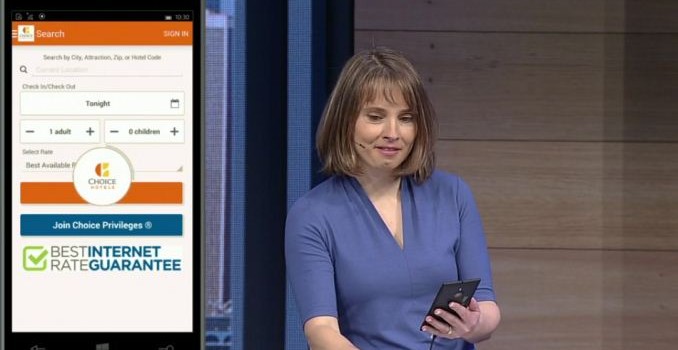Microsoft Demonstrates Android and iOS Applications Running On Windows 10
Much to the dismay of some viewers watching at home, Microsoft's BUILD developer conference today actually focused on technologies designed to benefit developers. However, some of the new developer technologies shown today may end up having profound impacts on Windows users. While Microsoft has never had any issues with making software available for Windows on the desktop, the same can't be said about Windows in the mobile space. Windows Phones and tablets have suffered from a lack of applications compared to their Android and iOS counterparts, and Microsoft hasn't been able to convince many developers to make Windows a priority for their mobile applications. Given this situation, Microsoft had to find another solution to the problem, and today at BUILD they showed what may very well be it.
The first big announcement was Project Astoria, which enables support for running Android applications programmed in Java or C++ on Windows 10 phones. During the keynote this was described as an "Android Subsystem" within Windows. The end result is that developers can bring their Android applications over to Windows 10 phones with minimal effort. There will still be issues with applications that link into Google Play services for features like Maps and location, but there are now far fewer hurdles for developers than there have been in the past. Microsoft demonstrated this during the keynote by showing the Choice Hotels application for Android running on a Windows 10 smartphone. The demo did run into a few issues, but it was still impressive to see.
What's even more remarkable is Microsoft's work to allow developers to use existing code from iOS applications programmed in Objective C to make Windows 10 applications. This new initiative is called Project Islandwood, and it allows developers can take their existing applications written in Objective C, have Visual Studio convert the Xcode project into a Visual Studio solution, and compile it for Windows 10. The demo shown on stage showed an application written for the iPad being compiled to run on Windows. Not only did it work well, but the application itself was not just a basic app. Apps using UIKit and Core Animation compile fine as Windows 10 applications, and it will be very interesting to see just how far this solution can go in bringing complicated applications over to Windows.
The demonstration during the keynote was a mathematics game which utilized the UIKit framework and Core Animation, and had very complication visual effects and animation. Despite this, the demo worked even more smoothly than the Android application demonstration, and even worked with input using the mouse. Microsoft also revealed that the ability to easily bring applications programmed in Objective C to Windows 10 is not something coming in the distant future, but is a technology that exists now and has already been put to use by game company King in bringing their Candy Crush Saga game to Windows Phone.
One important thing to note is that while Project Islandwood for iOS applications allows developers to create universal Windows apps, Project Astoria is strictly for bringing Android applications to Windows 10 phones.
These two announcements from Microsoft may end up being a game changer for Windows 10 applications on the desktop and more importantly on mobile. Developers still need to be convinced to focus on Windows, but if moving applications over from iOS and Android is as easy as Microsoft has claimed then it shouldn't be very difficult to get developers on board. Only time will tell how this ends up playing out.



